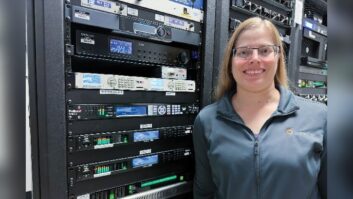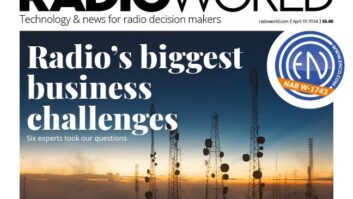Opinions are divided among technical experts as well as AM owners about how best to manage the band’s revitalization. Consider a filing to the Federal Communications Commission by Crawford Broadcasting.
Crawford, licensee of 14 AM commercial broadcast stations, filed reply comments seeking to refute conclusions by the AM Radio Preservation Alliance, a newly formed group of 17 owners whose stations include numerous Class A AMs.
As we’ve reported, the alliance believes the FCC has not devoted sufficient study or solicited enough comments. It raised particular concern over proposals to reduce or eliminate interference protections for Class A stations, and the proposal to decrease daytime protections for Class B, C and D.
[Read about the alliance’s earlier filing.]
W.C. “Cris” Alexander, director of engineering for Crawford, Alexander said the group is drawing the wrong conclusions about what parts of its predicted contour overlap areas actually constitute “interference.” According to him, predictions by the alliance are not only “overstated” but also “incorrect.”
His comments are likely to be scrutinized. Alexander has long been an active participant in national AM engineering policy circles and is a past recipient of the SBE Broadcast Engineer of the Year Award. (He also is a contributor to Radio World, which is not involved in the filings.)
The AM Radio Preservation Alliance has no small amount of AM expertise among its membership too. The alliance includes the country’s largest and some of its most well-known radio broadcasters (members are Alpha Media, Bonneville, CBS, Cox, Cumulus, Entercom, Family Stations, Grand Ole Opry (WSM), Greater Media, Hearst, Hubbard, iHeartMedia, NRG, Scripps, Townsquare, Tyler Media and Tribune). Engineers signing its FCC filing included Michael Everhart, Paul Donovan, Charles Menut, Milford Smith, Jeff Littlejohn and George Nicholas, as well as various corporate executives.
So this discussion is likely to be watched closely as interest groups align in the debate over whether and how to change longstanding interference rules.
Radio World reached out to the alliance for comment and has learned that the group will make formal FCC reply comments on Monday.
Interference concerns are a central part of the alliance arguments, and Alexander raised technical objections about its conclusions.
“Because the entire contour overlap area in each case is identified as interference, the Alliance claims that much larger areas will be subject to new interference than is actually the case,” Alexander wrote in comments filed April 11. He said well-established principles of radio allocations illustrate that interference only occurs when a certain minimum desired-to-undesired (D/U) signal ratio is not achieved. These signal ratios are well established and have existed in various FCC and industry documents for many years, Alexander wrote.
As such, the procedure for determining an interference area is more complex than simply measuring contour overlap area. It involves the plotting of multiple contours, both desired and undesired, then drawing a line between the individual contour intersections to determine the boundary of the interference area, where the minimum D/U ratio is not exceeded, Alexander wrote.
He said the general procedure is described detail in two FM broadcasting service agreements: the U.S.-Canadian FM Agreement and the U.S.-Mexican FM Agreement. While procedures described in these documents are applicable to FM stations, the principle and general procedure are the same for AM purposes, Alexander said.
Alexander said that although changes were made to a contour-overlap based allocation system for the AM Broadcasting Service in 1964, the definition of interference remains based on D/U ratios and not contour overlaps, and as such, the predictions offered by the AM Radio Preservation Alliance “are seriously overstated and incorrect.”
Alexander asked that the commission take Crawford’s comment filing into consideration as it evaluates the Alliance’s comments.
Reply comments on the AM radio revitalization issue are being accepted through Monday April 18 using proceeding number 13-249.












